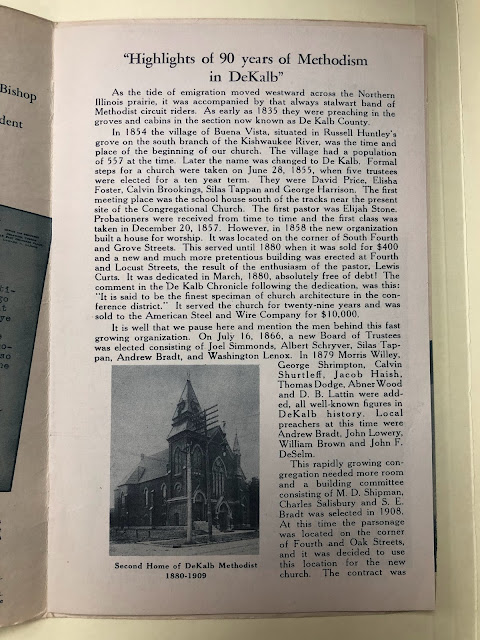This song, written by Art. Edwards, is featured on the first pages of his barbed wire book "Unusual Fence Wires," published in 1979. Fans of the Glidden story, as well as barbed wire collectors, will enjoy this charming song.
"A brief history of barbed wire in song with a little humor added"
By Art. Edwards
"More & More Barbed Wire"
Use tune of Casey Jones
"There was a Mister Rose from up in Illinois
He had had a dream ever since he was a boy
He said to his wife we'll go to the fair
We'll take the buggy and the old grey mare
So he took a stick and he drove it full of nails
He sharpened the points and hung it on a rail
He said now boys step up and take a look
This will be something that will go into the book
Then up stepped Mr. Glidden and some more of the boys
They looked the thing over until their eyes were sore
They each had a plan to beat the other man
They would put on some barbs and fence in the land
So after a short stay they went their own way
They each got busy the very next day
Now Mr. Glidden said to his hired hand
Just slip on the barbs with either hand
CHORUS:
Well more and more wire more and more barbed wire
We'll keep on collecting' til our boards are full
Then Joseph said honey we'll make ourselves some money
If you're not going to grind we'll twist several kinds
We'll fence in the yard and we'll fence in the barn
I don't think those barbs will do much harm
Then people came out to see this fence
Mostly on Sunday and other days since
It began to catch on and the first thing they knew
This barbed wire wasn't anything new
Then Bet a Million Gates went to San Antonio
He had no partner he just went alone
He built this pen and they put the cattle in
He bet a lot of money and he took them all in
They found a piece of wire in the Trinity River Bank
They took it to the station and they all begin to think
We need to get together and organize a club
So they called the darned thing a barbed wire club
CHORUS:
Well more and more wire more and more barbed wire
We'll keep on collecting' til our boards are full
So they met at Fort Worth each and every month
They didn't drink much just a little punch
They traded old wire and told tall tales
There weren't any ladies just a bunch of old males
Then others heard about it and begin to do the same
They gave the darned thing the same old name
They have so many shows we can't see them all
Just one in the Spring and one in the Fall
Now Mr. Jack Glover he made himself a book
And on the front cover you ought to take a look
It's really not a bible it's just another book
Several preachers bought it and simply got took
Then Mr. Allison thought he would try it
But his wife Jimmie says do you think they'll buy it
Yes with all these traders I think they'll try it
They'll look the thing over and then they'll buy it
CHORUS:
Well more and more wire more and more barbed wire
We'll keep on collecting' til our boards are full
They went down the road to look for old wire
And about that time they had a flat tire
They walked around behind and what you think they saw
Twas an old piece of wire wrapped all around the tire
They got out the jack and raised up the wheel
That's when Payne said Bill I'll make you a deal
Now Bill was pretty slow but finally said no
We'll take the wire and pay for that tire
We do mostly tradin' but also some sellin'
That's why we need the trends to know what to tell 'em
If we couldn't trade 'em we'd just have to sell 'em
Now if you trade by mail you'd better know your man
They'll tell you anything just to get some more strands
They'll find some old wire and give it a fancy name
And when it comes in you'll have a lot of the same
Then I got myself some marbles and put them in a sack
Then locked up the doors of my old shack
I found some Crandalls it was in short lengths
So I left some marbles for two of those links
Them came to the creek and stopped at the bank
And that's when I really began to think
I hadn't found much just mostly old Decker
I had lost all my marbles and become a wire collector
CHORUS:
Well more and more wire more and more barbed wire
We'll keep on collecting' til our boards are full




















































